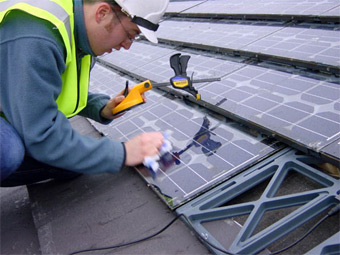
ECCD has developed a PV roof tile through Powertile Ltd which is now sold under license by Marley Eternit. A test roof at the University, which is shown in Figure 3, is used for prototype assessment and analysis of the thermal behaviour of different roof constructions.
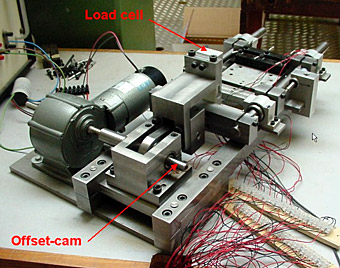
The installation of modules in building facades and other structures has necessitated the use of push fit connectors to enable quick and easy inter-module dc electrical connection. An accelerated lifetime fretting rig has been developed to test presently available and PV prototype connectors as the dc interconnection between PV elements represents a potential weak link in a PV system.
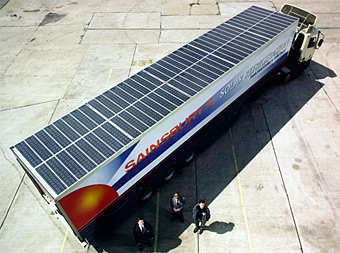
The Energy and Climate Change Division has led a programme to develop what is believed to be the world’s first solar powered refrigeration unit installed on a working articulated vehicle for Sainsbury’s Supermarkets Ltd.

The Scolar Programme for Photovoltaics was initiated as a response to the Government’s Foresight Challenge to develop photovoltaic (PV) technology and to raise awareness of PV in schools and other educational establishments.
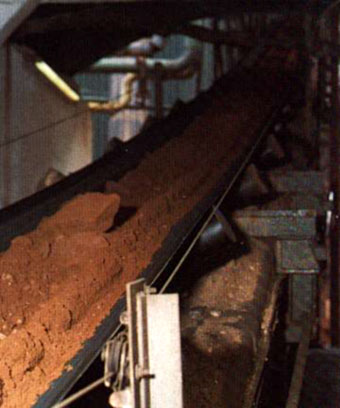
Three year research programme to investigate the use of micro-organisms in a bioleaching process, as an alternative method to hot acid leaching. The project aimed to produce a high quality sand product using less hazardous chemicals, which would also result in a safer by-product for disposal.
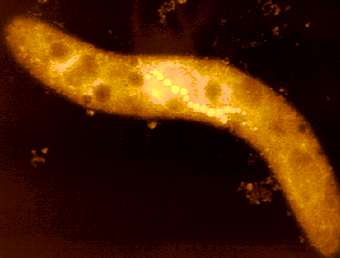
The Energy and Climate Change Division has been involved in research utilising bacteria for industrial contaminant control. The work has concentrated on bacteria with magnetic properties which, for example, can be used to immobilize heavy metals from a surrounding solution. These magnetic properties permit removal of bacteria and contaminants from the solution by using a superconducting, permanent or electromagnet.






